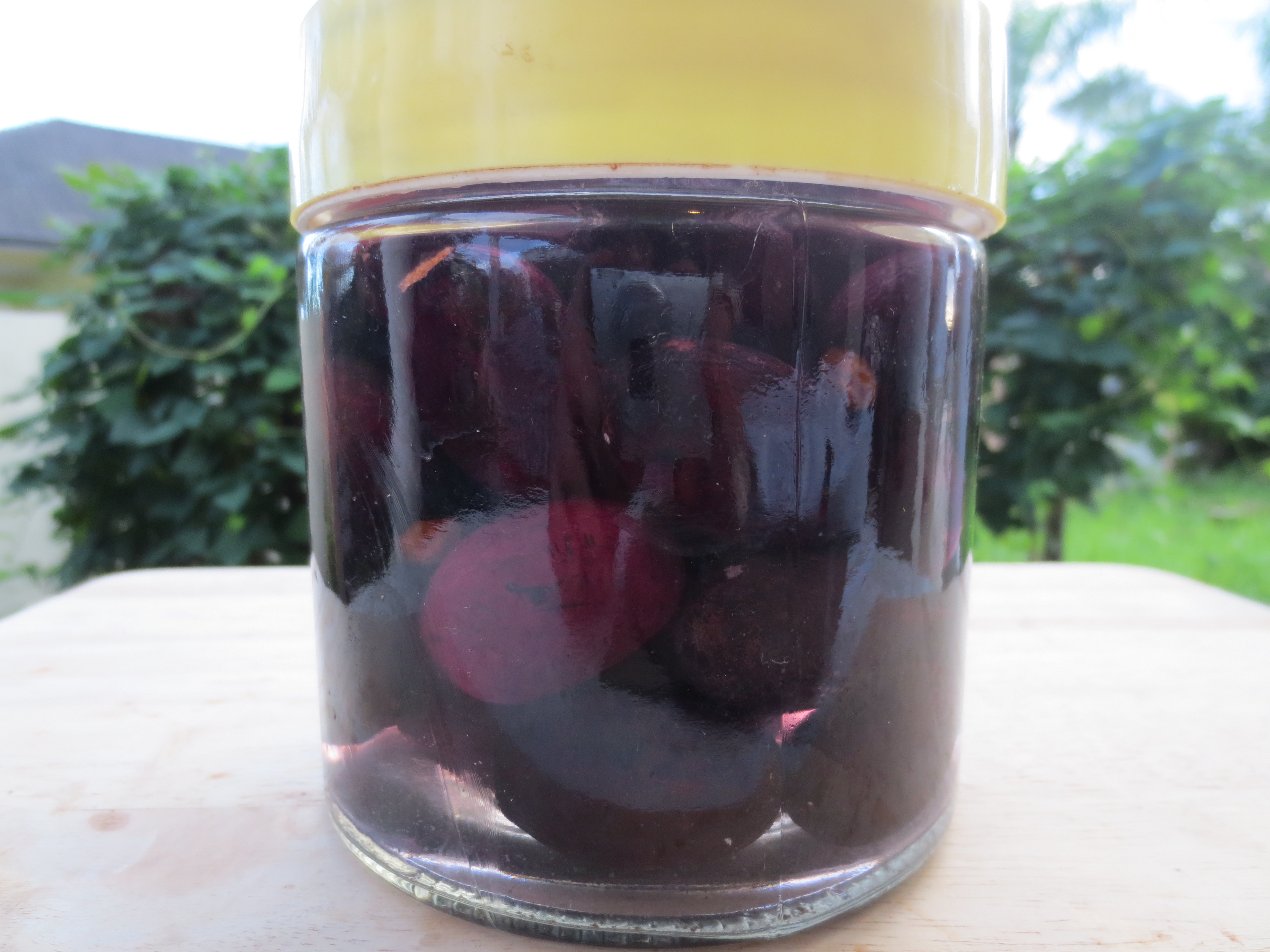Wild olives from Sarawak ? Do you know that we actually have wild olives known as ‘Dabai’ in Iban from our rainforest in Malaysia? Not only dabai, we have its look-alike, kembayau with an entirely different taste and texture.(野生橄榄)

Unlike the olives in Italy and Greece which grow on short and bushy trees, our olives grow on tall trees, as tall as 30-60m.The price is RM18-30 per kg. This year we have a lot of wild fruits in the markets so price goes down a bit. How does it taste? Well, the texture is like firm avocado flesh but more creamy, more fragrant and once in the mouth, an experience of unforgetable rich flavour, distinctively that of the dabai will haunt you forever.

Dabai is a GI (geographical indicating) plant of Sarawak and local people have started to plant them in small scales. What we buy from the market is a mix of jungle produce and fruits from small holders. Wild dabai are more expensive, may sell at RM28 per kg in Kuching.Cheaper dabai at RM10-12 per kg are cultivated by the small holders locally. Wild dabai has a stronger flavour due to the maturity of the trees and the natural environment surrounding their fruit trees.
Different ways of preparing the dabai
- By steeping the fruits in lukewarm water,just enough to cover them. Leave the pot open and the olives will get cooked after 30 min.
- By storing the fresh and cleaned dabai in the freezer. This can last for few months and just thaw the fruits before serving.
- By soaking the fruits in thick soya source for a few days.
Eat right away with rice, dipping them in thick soya source or sprinkle with salt. Dabai paste can be made by discarding the seeds and then mix with rock salt. Keep in airtight containers and can last for weeks. Dabai paste are sold in the markets and high-end products like dabai beauty soaps are also available.

Soak the dabai in brine solution for 3 days or longer and yummy yum yum yum dabai ready for dabai fried rice with chillies and corainder leaves.

Fried Rice with Dabai – Recipe
Ingredients
- 1 cup of cold rice (left over rice kept in the fridge overnight)
- 5 cooked dabai (salted or unsalted) – discard the seeds, cut into bite size.
- 1 chilli – chopped
- 1/2 cup of chopped cilantro
- a pinch of salt
- 1 tsp light soya sauce
Method
- Heat up 1 tbs of corn oil.
- Fry the dabai and chilli together till it becomes fragrant.
- Add in the cold rice and keep on stir-frying.
- Finally add in the cilantro.
Just try your hands on this simple recipe and post your picture to share with us. Yeah, lets go cooking !
But before cooking dabai, make sure you learn something about its look-alike, kembayau as shown in the picture below.

Dabai and kembayau are two different jungle produce of Sarawak rainforest. Kembayau, lacking popularity, is still very much kept as a wild and edible fruit of Sarawak rainforest.
Dabai is canarium odontophyllum while kembayau is dacryodes rostrata forma cuspidata in latin.
- Kembayau is darker, almost black in color while dabai is purplish in color.
- Kembayau is oblong in shape while dabai is round and short.
- Kembayau seeds are soft and slimy while dabai seeds are hard.
- Kembayau has dry, thick and dull skin whereas dabai has smooth and shiny skin.
- Kembayau has seeds that are soft and slimy whereas dabai has seeds with hard shells.
- Kembayau has seeds that are round in cross-section whereas dabai has seeds that are triangular in cross-section.
- Kembayau seeds are not edible whereas dabai seeds contain kernels that are clunchy and nutty as almond seeds. Chop or hammer the seeds and eat the kernels inside, though troublesome but worth the efforts once you have an unforgettable taste of the nuts inside.

The main difference is in the taste and texture.
Kembayau flesh is thin and slightly sour whereas dabai flesh is thicker, more fragrant, creamy and richer in flavor.
Dabai is just so unique, in every sense and every aspect. It is one of the gems from the vast rainforest of Sarawak.
For the nutritional value of dabai, please click table 1.
Notice its remarkable high potassium content.
Getting ready for the next dabai season?
Well, from November to January is the fruit season in the land of Borneo.
All the edible wild fruits and nuts will be there in the markets awaiting your patronage.
Copyright claim – Do not crop any pictures from malaysiavegetarianfood.com.Do not share our pictures without any watermarked signature on them.Excerpts from our articles to be credited to malaysiavegetarianfood.com.
